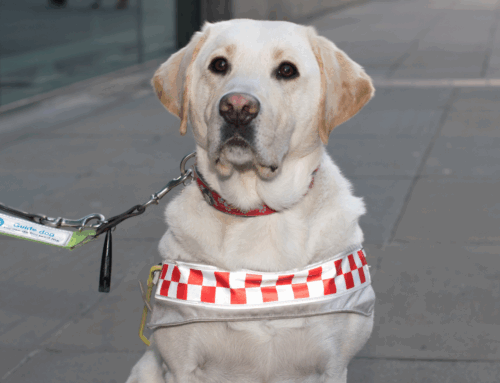This article provides insight into standard reasonable adjustments for job interviews. The knowledge will help HR and recruitment professionals create an accessible and inclusive process.
Enhance The UK’s expert tips will keep you on track, for more advice book a free 20 minute consultation.
Firstly, be aware that applicants may not disclose their disability on their application form. This may be for fear of not getting an interview and particularly the case if a candidate has a hidden disability.
Whatever the reason having an accessible recruitment process is beneficial to every candidate, disabled or not. As standard you should always ask a candidate if they have access requirements prior to the interview date.

Infrastructure and Physical Access
1. Entering the building
Does your venue have:
- automatic doors
- level access (or ramps)
- a lift to all floors
If the answer is no, then reserve the most accessible interview room you have available. For example, a room on the ground floor if there are no lifts.
(A great idea when renewing or considering new rental office space is to conduct an access audit check )
2. Prior to entering the interview room
We all value a warm welcome but for standard reasonable adjustments you should:
- Greet your candidate in the waiting area and ask if there is anything that they need prior to the interview starting.
- On the way to the interview room offer the use of your toilet facilities, showing where they are. Ensure that the accessible toilet is unlocked and not being used to store the mop!
- It’s helpful if the toilet facilities are near where the interviews are being held as this improves access.
3. An Accessible Interview Room
The best layout for an interview is to sit opposite the candidate at a small table within a spacious room. Here’s why:
- Candidates with visual or hearing impairments will be able to engage in the conversation as you are both close enough to communicate effectively.
- If your interviewee is a lip reader they can see what you are saying.
- Being close, with sufficient personal space, allows for eye contact.
- A smaller table set up is better for candidates with hidden disabilities as it can reduce stress or discomfort. Heck, no-one feels relaxed being peered at down a board table!
- Provide room to move around – a candidate who is a wheelchair user needs space to access the room freely.
- If interviewing a wheelchair user, ask if they would prefer to stay in their wheelchair or transfer to one of your office chairs. Then remove a chair or leave a space accordingly.

4. Lighting
As part of your standard reasonable adjustments please consider the importance of lighting.
- Bright lights and glare can bring on stress and headaches for some people so adjustable lighting in the interview room is recommended.
- For a visually impaired candidate a brightly lit room may be beneficial.
- For a lip reader ideally the interviewer would face the light in the room to improve visibility of their face. If the interviewer sat with the window behind them their face would be in shadow making it harder to lip read.
5. Loop System
For standard reasonable adjustments ensure that you have loop systems available for deaf or hearing impaired candidates. They are inexpensive devices which can make such a difference.
Accessible Testing Procedures
6: Computer Access
Check that any online testing is fully accessible for all candidates. For example:
- Can the fonts be enlarged?
- Can the questions be navigated by the keyboard alone?
- Is screen reader software available?
If your test is not accessible, then offer an alternative for the candidate to demonstrate their knowledge and skills. Consider that a disabled candidate may take longer to navigate the use of technology. If they disclose an impairment to you, offer extra time to complete the task.
7: Preparation
Making testing procedures accessible may require the interviewer to prepare the candidate sufficiently. For example:
- Adding subtitles to video content
- Offering a calculator or mouse with larger accessible buttons
- Explaining the test requirements clearly
8: Regular Breaks
Including regular breaks in the interview process is beneficial, particularly for full day assessments or in-tray exercise. Allowing for intervals can help pace the candidate’s thought process and would be extremely helpful for some disabled candidates.
Some candidates who are neurodivergent can become very tired by the interview process. Remember this does not reflect on their ability to do the job and it would be unfair not to allow them fair consideration.
Awareness and Attitude
In this short interview Claire Holland, our Head of Training explains the important of awareness and attitude. Tap into her years of expertise and experience by booking a free 20 minute consultation today.
Keep up to date with all Enhance The UK’s top tips by following us on twitter @EnhanceTheUK. If we can help with training, access audits or general enquiries please do get in touch.



